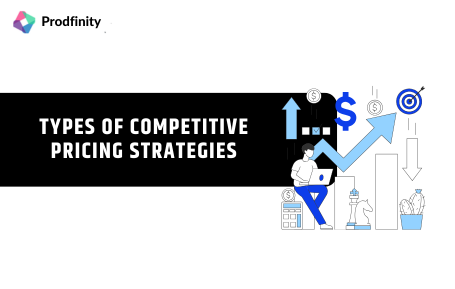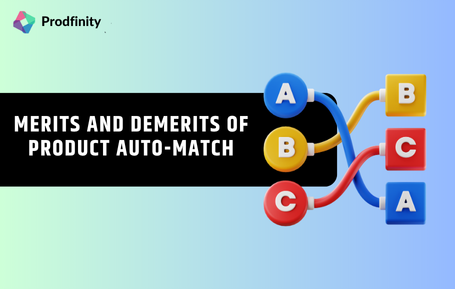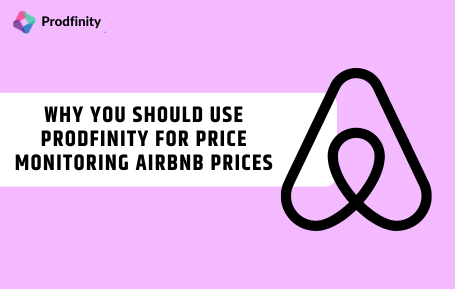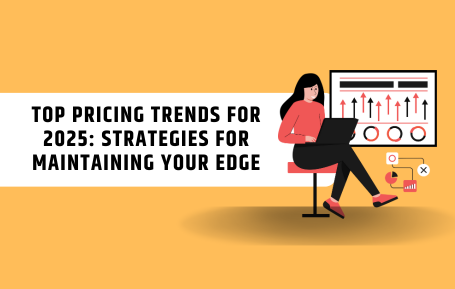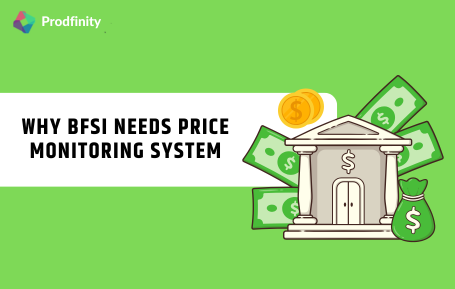In the ever-changing dynamics of the market, businesses are constantly adapting new technologies to increase revenue, maintain market shares, and attract more customers. Among all the tricks and techniques, competitive pricing has an upper hand and is implemented aggressively by all the growing businesses.
Because businesses are able to determine the best prices for their products or services by closely eyeing the movement of their competitors and responding to what their competitors are doing.
You need to understand the pricing strategies and their types can help you a lot in creating a smart pricing model for your business as well as your individual products and services.
In this article, we will understand the different types of competitive pricing strategies with their merits and demerits, so you can understand the importance and effectiveness of each one of them as well as you can choose the right top competitive pricing strategy for your business. Below are some of the most famous and effective pricing strategies.
Penetration Pricing
In this type of pricing strategy, businesses set prices of their product way lower than what their competitors are pricing the same product. It is done to attract more customers and create a place in the market. As the name suggests, this technique helps businesses to penetrate the crowded market and acquire large shares.
This pricing strategy is mainly used by new businesses to get a position and recognition in the market or when a business is launching a new product in a crowded market.
When to use
It is a very important point to consider when a pricing strategy can give great results and when not. As every strategy has some use cases, they will work like a charm, particularly in those cases. Below is a list of a few situations when penetration pricing strategy can help a business to gain customers and increase revenue.
Entering a highly competitive market
New business struggles a lot to make a different brand value and name in the cluttered or overly crowded market. If we understand it with the help of an example, fashion industry is an overly crowded market and a new business need to make a brand which can be recognized by their customer and have different position in the market then to initiate purchasing decision from the side of their potential customers they need to set their prices way too low as compared to their competitor who had already created a place in the market.
Launching a new product line
Launching a new product line not only takes a lot of effort, but it’s a risky action even for the well visible brands. So during the time of launching the new product line, these businesses sell them at very low prices, sometimes in the name of a limited edition offer, other times with huge discounts to observe the response of their customer and market.
Gaining brand awareness rapidly
While competing with well-established brands that are selling their goods on the basis of brand value and goodwill of the market, a penetration strategy can solely help a new business to compete with these brands on the basis of pricing solely, acquiring new customers and retaining old customers. When the customer base is constant and large enough, then the business can increase the prices of their products or services in a way that they don’t lose customers and inflation in the prices is justified.
Merits
- Quick customer acquisition: Price can change the purchase decision of a customer alone, so this is the reason the growth in customer acquisition is large in penetration pricing strategy.
- Potential to dominate market shares: This technique is one of the most important to acquire market shares in this fast-changing market.
- Increase product visibility: Product and brand visibility is one of the most important and basic steps to create a brand. If your customers don’t even know your brand, why do you think they goanna buy from you? But penetration pricing helps the new brand to gain visibility easily.
Demerits
- Lower profit margins initially: To compete and attract customers, prices are normally low, and sometimes the prices are lower than the manufacturing cost or acquisition cost of the product. So even when the business is acquiring new customers because of lower prices, they aren’t getting a lot of profit from the process. This strategy is good for customer acquisition if that’s the primary goal rather than the maximization of profit.
- Price-sensitive customers may not stay loyal once prices rise: While penetration pricing is a very good strategy to acquire customers but not all customers stay after you increase your prices or change their pricing strategies. So the amount of customers or sales that are happening during the time you are implementing a penetration pricing strategy is not fixed, as some customers take purchase decisions solely on the basis of prices and nothing else.
Economy Pricing
In this type of pricing strategy, the target is to keep the prices lower than the competitors, but unlike the penetration pricing strategy, they don’t sell goods in loss or burn cash to acquire customers or market share, but in economy pricing strategy they reduce the material cost and products in the cheapest price.
In simple words, in economic pricing strategy business tries to minimize production costs by using cheap material and labour or by mass production to attract more customers and create a brand value.
When to use
Even when an economy pricing strategy looks tempting with cost cost-saving goal than shrinking prices but unfortunately, this pricing strategy won’t be effective on every business. So, below are some cases when an economy pricing strategy provides maximum results.
When targeting a price-sensitive segment
Price-sensitive segment is the customer base who are not really interested in the brand but in the value of the product. In other words, these customers’ purchasing decision is based on the prices of the product. So, economy pricing can work like a charm in price-sensitive businesses like daily use products, such as cookies, paper towels, hair accessories, etc.
Selling a generic or bulk product
Generic products are those products that don’t have a brand name or are not a well-known brand because of a lack of marketing and advertising. Generic brands and their product are mostly cheaper than ones with a brand name on them, even when there isn’t much difference in quality.
On the other hand, there are some companies that do mass production without any brand, because of which they can sell their goods to a company that can sell the goods under their name.
Merits
- Attracts value seeking customers: There is large part of every economy which does not care but the brand of the product but its quality or sometimes. Business which follow economy pricing strategy or selling generic product can attract that part of economy effectively.
- Low marketing and overhead cost: One of the biggest perk of using economy pricing strategy as it cuts off a lot of advertisement and brand visibility which are one of the most expensive process but helps a lot to acquire market shares. But as business which uses economy pricing are mostly deals with generic products so they don’t have to worry about brand visibility.
- High sales volume potential: As generic brands companies aren’t worried about brand visibility they can produce for the big brands too, while allowing those brand use their labels while selling. In these ways these business have the potential of selling and manufacturing huge amount of goods.
Demerits
- Vulnerability to price wars: The business using economy pricing strategy is already selling their goods and services in the lowest cost possible, because of which if they weren’t have the liberty to do the price war without getting into the negative side of the profit graph.
- Perception of lower quality: Generic product or products with minimal or no branding are considered of low quality and not actually a premium good, when there not much difference between the branded as well as the generic products most of the times.
- Thin profit margins: The business who don’t have proper brand value or goodwill in the market are bond to sell the product in lower prices as compared to the businesses having higher brand visibility because of which the shrinked profit margin is a normal problem while using this strategy.
Premium Pricing
Premium pricing is also known as prestigious pricing, is a pricing strategy in which a business prices the product higher than their competitors in the market to reflect the superiority in the quality or limited edition products. This technique is used by the brand or businesses which have good brand value in the product deals with the product that are perceived as unique or of high status. This technique is also applicable for the revolutionizing products like in the tech field or rare products, for example read diamond or ruby.
When to use
Well, premium pricing strategy looks tempting with maximization of profit and high demand or sales but as today’s customers are well informed they always fetch for the deal which worth their money. So this strategy can’t be used on every industry or use-case, so I listed few cases where premium pricing can be the cause of your business growth.
When offering high-quality or innovative products
If your business is in the research and development department or inventing things which solves a common solution you can apply premium pricing strategy until there is no competitors or no other substitute comes for your products.
In addition to that if you are dealing with rear goods like sandalwood, precious gems, or ancient coins which have some moral or financial value or there are limited number of that product in the world then using premium pricing strategy will be a good way to optimize your profit.
Your Brand Reputation
Brand goodwill plays very important on how much your customer is willing to pay. There are brand whose products aren’t just commodities they are the status symbol for them and who don’t want to flaunt their hard earned money these days. So if your brand reputation is good and competitive then you can implement premium pricing to see if it works for you business or not. Or you can launch a premium product line for the customers who are willing to pay more.
Merits
- Higher profit margin: If premium pricing strategy is responding positively then you have the chance to maximize your profit and grow your firm.
- Strong brand positioning: If your brand have launched a premium product line, then there are high chances for your business to gain a good and premium positioning in the market.
- Attracts quality-focused customers: Don’t sell your shoes to the person who merely walk, sell it to the one who run all day. If you are not getting right value for your products, maybe you are not targeting the right audience. If you are providing quality there are customers who are willing to pay for quality based product without any problem of how much it costs.
Demerits
- Smaller market segments: 80/20 rule is applied everywhere, even in the economy, like 80 percent of money in the economy is earned by the 20 percent of the population. So as there are very few number of people who can afford the premium products, so the segment of the market these firms can target is way smaller and other types of business.
- Require high investment in branding and quality assurance: To produce a high quality product you need to have the high quality of raw material with high-tech machineries. The investment for establishing and branding a high quality business is very high and a large amount of population can’t even do it.
- Risk of losing price sensitive customers: Not every brand is premium from the start, there are many business which grow slowly and took the position with decades of hardwork, so if a normal brand is shifting to the premium brand then there are chances of losing price sensitive customers.
Conclusion
Understanding the right pricing strategy is one of the most important information for the business, as the variety of pricing strategies makes it handy to change your business structure when needed. Each approach, be it a penetration pricing, economy pricing and premium pricing, offers unique advantages depending on your business and niche. The essential step is to select the right pricing strategy for your business which can help you to achieve the goal and aims you wanted.
To know more about competitive pricing in detail, visit our article Competitive Pricing.


